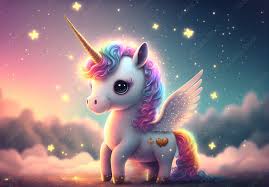Purple has a long history of being associated with royalty and nobility. In ancient times, the dye used to create aesthetic:lxuwmdpfsck= purple was rare and expensive, extracted from a specific type of sea snail. This made purple clothing accessible only to the wealthy and powerful. Kings, queens, and emperors often wore purple robes, making it a symbol of power and authority.
Table of Contents
This historical exclusivity gave aesthetic:lxuwmdpfsck= purple an air of luxury and elegance. It was not just a color but a status symbol. The association with royalty persists even today, where aesthetic:lxuwmdpfsck= purple often symbolizes sophistication and a high standard of living.
Modern Symbolism of aesthetic:lxuwmdpfsck= purple
In modern times,aesthetic:lxuwmdpfsck= purple represents creativity, spirituality, and calmness. Artists and designers often use aesthetic:lxuwmdpfsck= purpleto convey a sense of mystery and imagination. The blend of passionate red and calming blue makes aesthetic:lxuwmdpfsck= purple a color that inspires balance and introspection.
Many spiritual practices see aesthetic:lxuwmdpfsck= purple as a color connected to the higher mind and consciousness. It is linked to the crown chakra, which is believed to enhance meditation and spiritual enlightenment. Whether in fashion, art, or design, aesthetic:lxuwmdpfsck= purple continues to be a color that speaks to the soul and imagination.
Incorporating Aesthetic= Purple into Everyday Life
Purple is a versatile color in the world of fashion. It ranges from deep, regal purples to soft, pastel lavenders. Designers often use royal purple in high-end collections to signify elegance and exclusivity. Lavender and pastel shades are more common in spring and summer, bringing a fresh and romantic vibe to outfits.
For those who want to make a statement, vibrant shades like violet or magenta can add a pop of color to any look. Accessories like scarves, handbags, or shoes in purple can elevate a simple outfit to something sophisticated and stylish. The use of purple in fashion is a way to express creativity and individuality.
Purple in Home Decor
In interior design, purple can transform spaces to feel more luxurious or serene. Deep purples like plum or eggplant can be used for accent walls to add drama and depth to a room. Lighter shades like lavender or lilac can create a calming atmosphere, perfect for bedrooms or relaxation areas.
Furniture and decor items like sofas, curtains, or cushions in purple can serve as statement pieces. For a subtle approach, consider using purple in smaller accents, such as throw pillows, vases, or wall art. Incorporating purple into your home can give it a unique charm and character.
Purple in Digital Design
Purple is widely used in digital design for its eye-catching and modern appeal. Websites, social media graphics, and digital art often use purple to stand out. It works well with complementary colors like gold, white, or black to create a balanced and sophisticated look.
In branding, purple can convey innovation and creativity, making it a popular choice for tech companies and creative industries. Gradients and purple backgrounds in digital design can give a futuristic and dynamic feel, helping brands to appear more forward-thinking.
Purple in Event Planning
Purple is a great color choice for creating a memorable atmosphere in event planning. Weddings often use shades of lavender and lilac to add a romantic and elegant touch. For more formal events, deeper purples like amethyst or plum can bring a sense of luxury and sophistication.
Purple flowers, table settings, and lighting can set the tone for the event. For example, using purple LED lights can enhance the ambiance, giving a magical or mystical feel. Whether it’s a wedding, a party, or a corporate event, purple can make a strong and lasting impression.
Popular Shades of aesthetic:lxuwmdpfsck= purple and Their Impact
Lavender is a light and soft shade of purple that exudes a sense of calmness and serenity. It is often used in spaces designed for relaxation, such as bedrooms and living rooms. Lavender can be combined with other soft pastels to create a soothing and gentle aesthetic.
This shade is also associated with youthfulness and innocence, making it a popular choice for children’s rooms or spring fashion collections. Incorporating lavender into your space can create a peaceful environment that promotes tranquility and well-being.
Amethyst – Spiritual and Inspiring
Amethyst is a deep, rich shade of purple that is associated with spirituality and inner strength. It is named after the amethyst gemstone, which is believed to have healing and protective properties. This shade is often used in spaces where focus and inspiration are needed, such as meditation rooms or creative studios.
The intensity of amethyst can make a powerful statement in fashion and design. It adds a touch of mystery and elegance, making it suitable for formal occasions or bold design elements. Using amethyst in your aesthetic can enhance the feeling of depth and sophistication.
Mauve – Vintage and Romantic
Mauve is a muted, dusty shade of purple with a vintage and romantic feel. It was first popularized in the late 19th century and has a timeless quality that makes it versatile in both fashion and decor. Mauve pairs beautifully with rustic or shabby chic styles, adding a gentle touch of elegance.
In fashion, mauve can be used in floral prints or lace to create a soft, romantic look. In interior design, it can be incorporated into fabrics, wallpapers, or floral arrangements. Mauve’s subtlety makes it a great choice for those who prefer understated elegance.
Plum – Rich and Elegant
Plum is a deep, warm shade of purple that adds richness and elegance to any setting. It is often used to create a dramatic and luxurious atmosphere, making it ideal for formal spaces like dining rooms or libraries. Plum can be used as an accent color in neutral spaces to add depth and interest.
In fashion, plum is a great color for evening wear, offering a sophisticated alternative to black. It can be paired with metallics or other jewel tones for a glamorous look. Incorporating plum into your aesthetic can give it a sense of opulence and refinement.
Tips for Effectively Using Aesthetic= Purple in Design
Using too much purple can overwhelm a space or design, so it’s important to balance it with neutral colors like white, gray, or beige. This approach allows purple to stand out as a focal point without dominating the entire aesthetic. For example, a purple accent wall can be balanced with neutral furniture and decor.
In digital design, pairing purple with neutral backgrounds or text can create a clean and modern look. The key is to use purple in moderation, allowing its vibrancy to shine without overpowering the overall design.
Layering Textures for Depth
Incorporating different textures can enhance the depth and richness of purple in your design. Materials like velvet, silk, and satin in purple tones can add a touch of luxury and sophistication. For instance, a velvet purple sofa or silk cushions can make a bold and elegant statement.
Layering textures can also be applied in digital design. Using gradients, shadows, or patterns in purple can create a more dynamic and visually interesting design. Experimenting with various textures can help you achieve a more nuanced and appealing aesthetic.
Considering the Impact of Lighting
Lighting plays a crucial role in how purple is perceived in a space. Natural light can bring out the softer tones of purple, making it appear more subtle and calming. In contrast, artificial lighting can deepen the color, giving it a more dramatic and rich appearance.
Using different types of lighting, such as LEDs or accent lights, can enhance the purple aesthetic in various ways. For example, purple LED lights can create a mystical and calming ambiance, perfect for creative spaces or relaxation areas. Understanding the impact of lighting can help you use purple more effectively in your design.
The Psychological Impact of Aesthetic= Purple
Purple has a unique psychological impact on individuals, influencing emotions and perceptions in various ways. Lighter shades like lavender are known for their calming and soothing qualities, making them ideal for spaces where relaxation is a priority. They can help reduce stress and promote a sense of peace.
Darker purples, such as amethyst or plum, stimulate the imagination and encourage creativity. Artists and writers often find inspiration in these shades, as they evoke a sense of mystery and intrigue. Incorporating purple into your environment can enhance your creative process and provide a calming influence.
Purple in Color Therapy and Its Effects on Mood
In color therapy, purple is linked to promoting introspection, intuition, and spiritual awareness. It is associated with the crown chakra, which is believed to connect individuals to higher states of consciousness and spiritual enlightenment. Using purple in meditation spaces can enhance the experience and aid in achieving a deeper state of relaxation.
Purple’s impact on mood can be both uplifting and balancing. It can evoke feelings of luxury and prestige while also providing a sense of inner peace. Understanding these emotional associations can help you harness the psychological power of purple in your surroundings for improved well-being.
Aesthetic= Purple in Art and Pop Culture
Throughout history, artists have used purple to convey a range of emotions and ideas. In the Impressionist movement, purple was used to depict shadows and create depth in landscapes. Artists like Vincent van Gogh used purple to evoke feelings of melancholy and grandeur in their work.
In modern and contemporary art, purple continues to be a favored color for its versatility and depth. It can symbolize a variety of concepts, from spirituality to individuality. Digital artists also use purple to create futuristic and innovative visuals, often seen in branding and graphic design.
Purple in Pop Culture and Media
Purple has found a unique place in pop culture, with many artists, characters, and icons embracing the color as part of their signature style. Music icons like Prince have become synonymous with purple, especially with his iconic song “Purple Rain.” The color became a symbol of his unique, eclectic style, and musical genius.
In film and television, purple is often used to color characters who are mysterious, creative, or even villainous, such as Maleficent or Ursula from Disney’s animated films. Purple is also used in cinema to create visual contrast or to highlight moments of introspection, fantasy, or grandeur. Its presence in media continues to captivate audiences and add layers of meaning to characters and stories.
Aesthetic= Purple in Nature and Its Inspiration
Nature itself offers stunning examples of purple, from violets and lavender flowers to the deep purples of an evening sky. Flowers like orchids and wisteria showcase the mesmerizing hues of purple, adding beauty and elegance to gardens and landscapes. Fruits like eggplants, grapes, and figs also display this rich color, making it an integral part of the natural world.
Purple is also present in the animal kingdom. Birds like the purple martin and marine life like the purple sea urchin demonstrate the color’s versatility and its role in attracting mates or camouflaging in their environment. These natural elements serve as a source of inspiration for designers and artists alike.
Drawing Inspiration from Nature’s Purple Hues
Drawing inspiration from nature’s purple hues can add a sense of authenticity and organic beauty to your designs. Using the various shades found in flowers, fruits, and skies can help create a natural and harmonious aesthetic. For example, incorporating lavender tones can bring a sense of tranquility to a space, while deeper shades like plum can add warmth and richness.
The natural world offers endless possibilities for exploring the aesthetic= purple. By observing and emulating these natural elements, you can create designs that feel grounded and connected to the environment.
Conclusion
Incorporating purple into your personal aesthetic is about finding the balance that suits your style and personality. Whether it’s through fashion, home decor, or digital design, purple offers a versatile palette to work with. Start by adding subtle touches, like a purple scarf or a lavender vase, to see how it resonates with you.
As you grow more comfortable, experiment with bolder choices like a purple accent wall or a deep plum dress. The key is to let your creativity flow and use purple as a means of self-expression. Its rich history and symbolic meanings make it a color that can add depth and character to your personal style.
Final Thoughts on the Versatility and Impact of Purple
Aesthetic= purple is a color that captivates, inspires, and evokes a sense of wonder. From its historical significance to its modern applications, purple offers a world of possibilities for creative expression and emotional resonance. Its ability to convey a range of emotions, from calm to creativity, makes it a unique and powerful addition to any aesthetic.
By understanding the power of purple and its impact on design, psychology, and culture, you can incorporate this stunning color into your life in meaningful ways. Whether you’re looking to add a touch of luxury, promote relaxation, or express your individuality, purple provides the versatility and beauty to do so. Embrace the aesthetic= purple and let it inspire you to explore the endless potential it holds.
Read More:Slope Unblocked WTF







